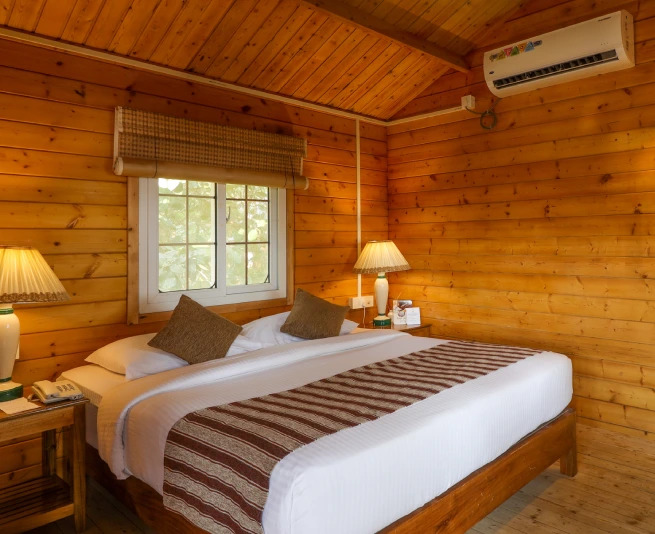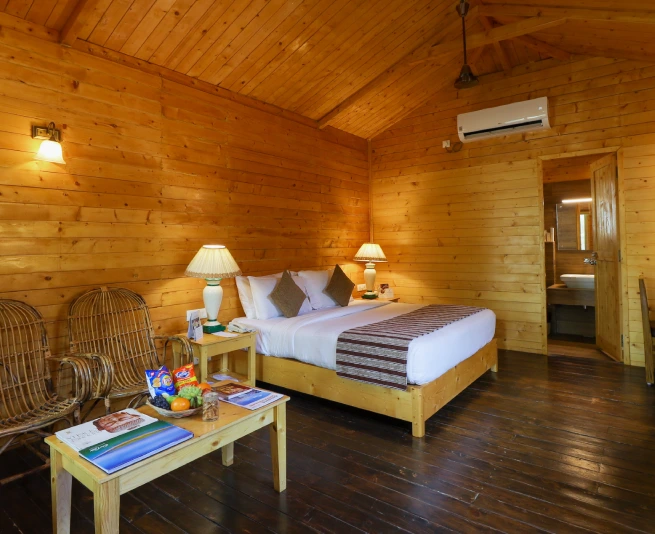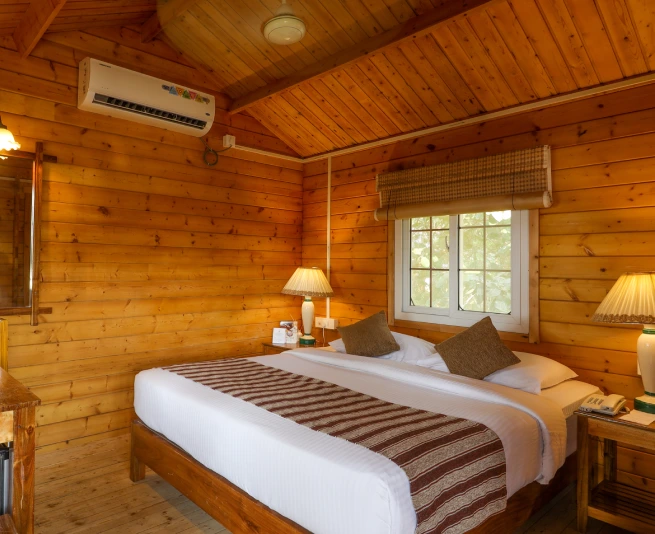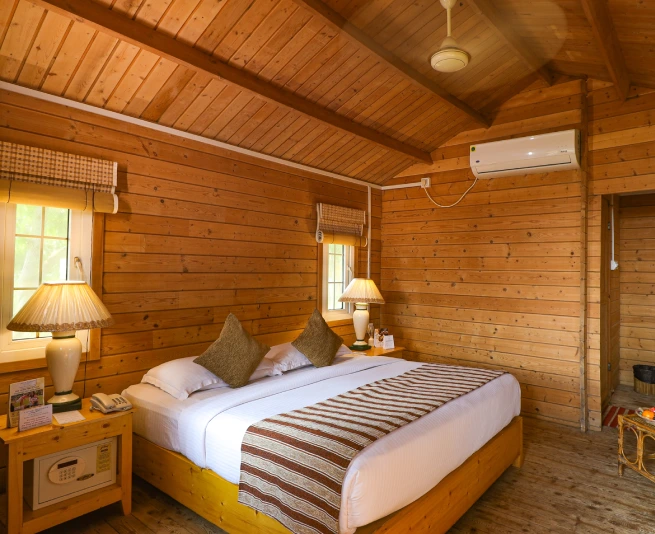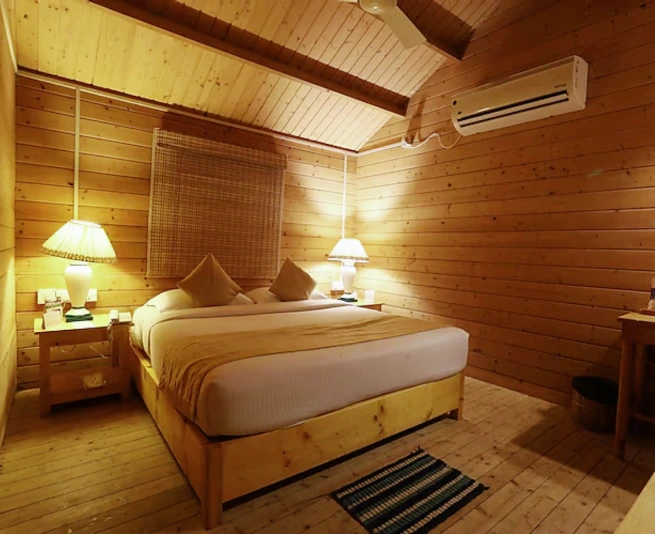Konark Sun Temple, situated in the eastern Indian state of Odisha, is a marvel of ancient Indian architecture and sculpture. Built in the 13th century by King Narasimhadeva I of the Eastern Ganga dynasty, the temple is dedicated to the Hindu sun god, Surya. The temple is famous for its impressive stone carvings, which adorn its walls and pillars. These carvings are a testament to the artistic skills of the craftsmen who built the temple and offer a glimpse into the cultural and religious beliefs of ancient India.
Stay at Lotus Eco Beach Resort Konark: Comfort, Dining & Coastal Charm
When visiting the Konark Sun Temple and admiring its awe-inspiring sculptures, enhance your journey with a stay at Lotus Eco Beach Resort Konark. Designed to blend eco-friendly living with modern comfort, the resort offers spacious rooms and cottages that provide panoramic views of the sea and lush gardens. Each accommodation is thoughtfully crafted to offer relaxation after a day of sightseeing. Guests can savour authentic Odia delicacies, fresh seafood, and multi-cuisine delights at the in-house restaurant, making dining at the resort a memorable part of your Konark trip. The serene home-like ambience, well-appointed rooms, and flavourful dining options ensure a wholesome coastal retreat.
Sculptures of Konark Sun Temple: A Journey Through Time
While the resort offers unmatched comfort, the Konark Sun Temple sculptures are the true highlight of your trip. From the lifelike depictions of animals like elephants, lions, and peacocks to the intricate carvings of Hindu deities such as Vishnu, Durga, and Surya, each sculpture narrates a story from India’s rich cultural past. The figurative and erotic carvings reflect ancient philosophies of life and human expression, while the iconic Sun Chariot, pulled by seven galloping horses, remains the most magnificent feature. Staying at Lotus Eco Beach Resort Konark gives you the perfect base to explore these timeless masterpieces and immerse yourself in the history and heritage of Odisha.
Animal and Bird Sculptures
One of the most striking features of Konark Sun Temple is the animal and bird sculptures that adorn its walls. They capture the essence and movement of each creature in a lifelike manner. These sculptures include elephants, lions, horses and peacocks, among others. Each animal sculpture is unique in its pose and expression and they are all incredibly detailed.



The elephant sculptures are a reflection of the importance they were given in ancient India. Elephants were used as symbols of power and strength, and the Konark Temple sculptures depict them in various poses, from standing majestically to trumpeting and charging. The lion sculptures, on the other hand, are a symbol of bravery and courage, and they are depicted in poses that capture their grace and power.
Stone Carvings of Deities
Konark Sun Temple is famous for its intricate stone carvings of gods and goddesses from Hindu mythology. The carvings depict them in various poses and expressions, each representing a different aspect of the divine. These sculptures are a reflection of the religious beliefs of the time and are incredibly detailed and capture the essence of each deity perfectly.
Inside Konark Temple, the sculpture of Lord Vishnu depicts the god in a reclining position, with his consort, Goddess Lakshmi, at his feet. Goddess Durga is a symbol of strength and power, and her sculpture depicts her in fierce pose and brandishing multiple weapons. These Konark Sun Temple statues are a reminder of the rich cultural heritage of India and its deep-rooted traditions.



Figurative Sculptures
Konark Sun Temple is also famous for its erotic sculptures, which are a reflection of the ancient Indian belief that intimacy is a natural and essential part of life. These sculptures depict various intimate acts and positions and highlight the importance of pleasure and sensuality in human life. The Konark Temple sculptures are incredibly detailed with each figure depicted in a lifelike manner.
The Sun Chariot
The most striking feature of Konark Sun Temple is the massive chariot sculpture at its entrance, which is pulled by 7 horses. The horses are carved in such a way that they appear to be running, with their manes and tails flowing behind them. It is believed to represent the chariot of Surya, the sun god. The 100-foot-high chariot is believed to represent his journey across the sky. The horses symbolise the seven days of the week, each horse representing one day.
Experience Konark at Lotus Eco Beach Resort
Inside Konark Sun Temple, sculptures will leave you mesmerised. To experience Konark in all its glory, consider staying at Lotus Eco Beach Resort, Konark, which is located at a distance of just 8.7 km from Konark Sun Temple. Nestled amidst the serene Konark beach, Lotus Eco Beach Resort Konark is an idyllic getaway. Its eco-friendly architecture seamlessly blends with the natural surroundings, offering a unique and refreshing ambience. With tastefully decorated rooms that offer stunning views of the sea and the verdant gardens, the resort caters to the needs of every traveller.
FAQs
The temple features intricate carvings of Hindu deities, celestial dancers (apsaras), musicians, animals, and scenes from daily life. Notably, it includes erotic sculptures, known as maithunas, depicting intimate human relationships.
Yes, the temple walls showcase scenes of daily life, including women applying makeup, playing musical instruments, and engaging in various activities, offering a glimpse into the cultural practices of the time.
The sculptures are primarily carved from khondalite stone, known for its fine grain, allowing for detailed and intricate carvings.
The seven horses symbolize the seven days of the week. In Hindu Vedic iconography, Surya, the Sun God, is depicted riding a chariot drawn by seven horses, each representing a day. These horses are also named after the seven meters of Sanskrit prosody: Gayatri, Brihati, Ushnih, Jagati, Trishtubh, Anushtubh, and Pankti.
The temple is designed as a colossal chariot with twelve pairs of wheels, each representing a month of the Hindu calendar. The structure includes a main sanctuary (deul), an audience hall (jagamohana), and a dance hall (natamandira). The temple's layout follows the square and circle geometry, forms found in Odisha temple design texts such as the Silpasarini.

Contact Us
With a 75-year legacy of exceptional hospitality, Orchid Hotel invites you to connect with us. For inquiries regarding reservations, events, corporate partnerships, or media relations, please use the contact details below. Our team is committed to providing prompt and personalized assistance, ensuring your experience with our eco-conscious hotels is seamless and memorable.

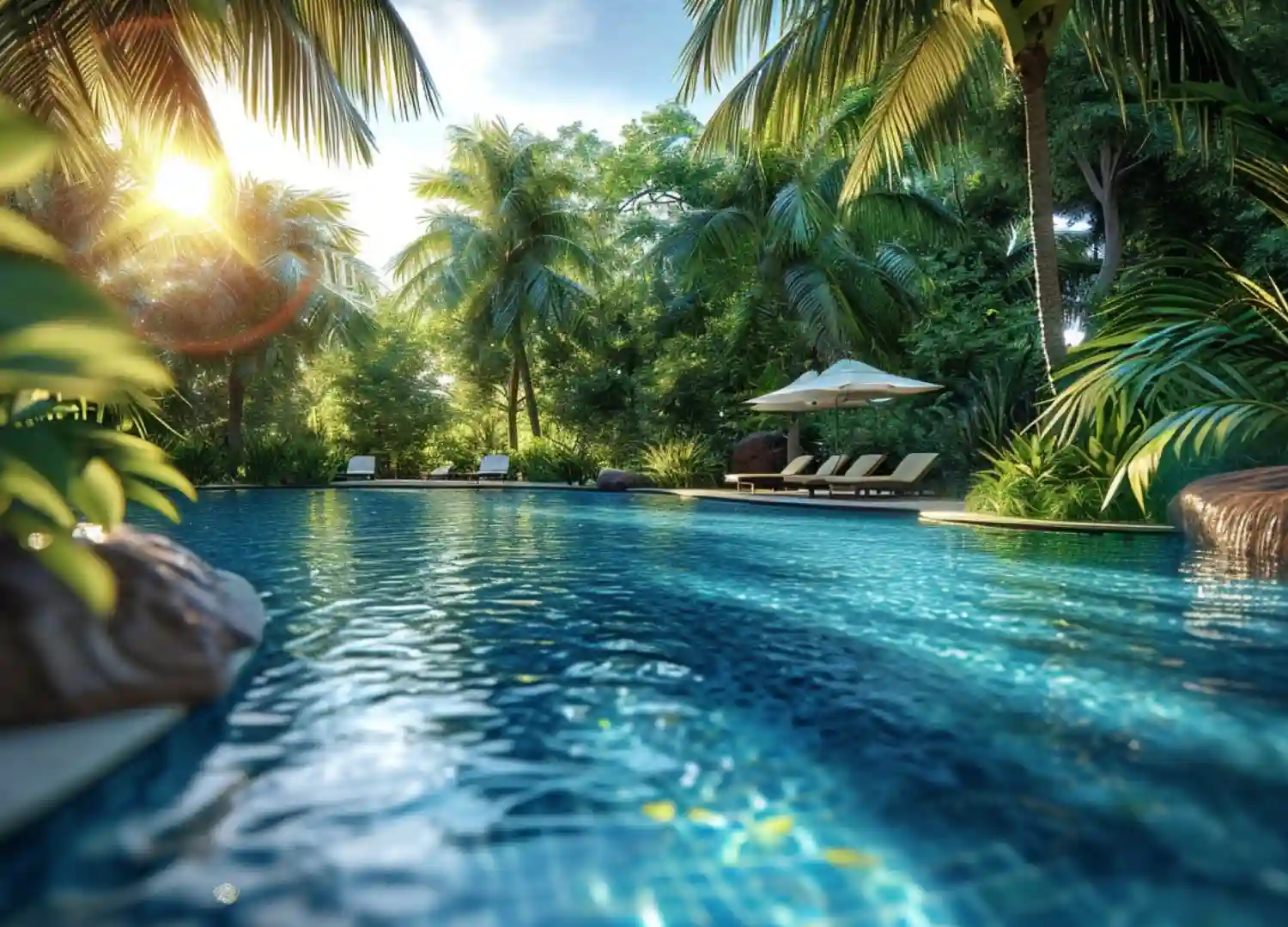
.webp)




